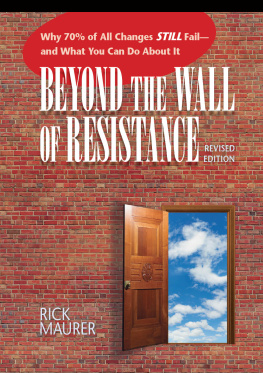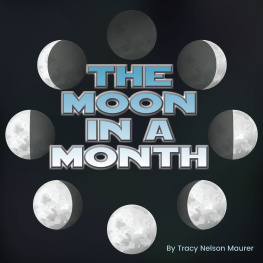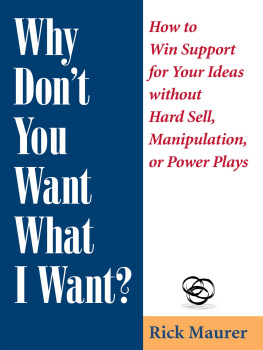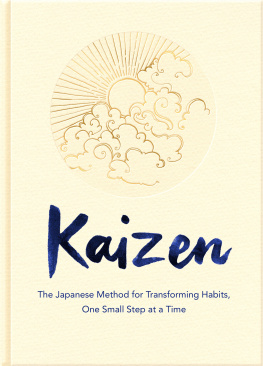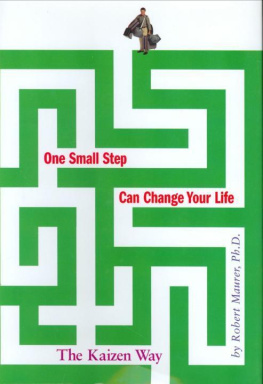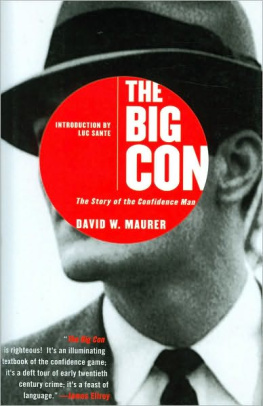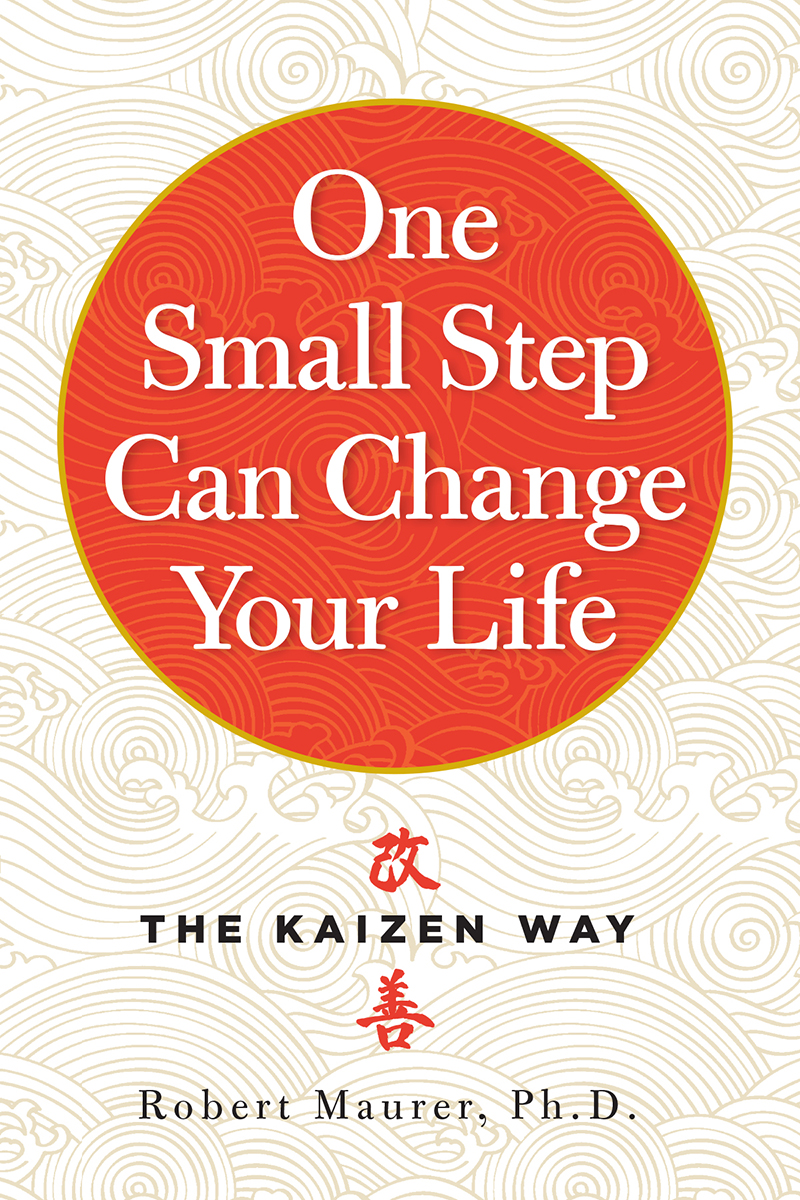One Small Step Can Change Your Life
The Kaizen Way
Robert Maurer, Ph.D.
Workman Publishing New York
for Mort Maurer, my father, who helped me to see the power of kaizen in the workplace, and my mother, Miriam, who demonstrated the strength of kaizen in relationships
Contents
Preface
Small things with great love.... It is not how much we do, but how much love we put into the doing. And it is not how much we give, but how much love we put into the giving. To God there is nothing small.
Mother Teresa
Change is hard!
Its a sentiment so widely accepted as fact that we dont question whether or not its actually true. And there are good reasons why many of us see change as a mountain to climb. Consider New Years resolutions, which almost always fail. The average American makes the same resolution ten years in a row without success. Within four months, 25 percent of resolutions are abandoned. And those who succeed in keeping their resolutions usually do so only after five or six annual broken promises.
Organizational change in business is also perceived as difficult. Popular business books preach quick-fix solutions to managers looking for fast ways to motivate resistant staff. Often these books take the form of business fables, employing simple storylines and cute animals to convey their message. Some become bestsellers, like John Kotters Our Iceberg Is Melting, which neatly encapsulates the prevailing wisdom of this genre: Employees must be convinced of an imminent emergencya threatin order to be motivated to make some change.
But contrary to popular opinion, changewhether personal or in businessdoesnt have to be agonizingly painful. Nor must it happen only as the result of scare tactics employed to shock ourselvesor our colleaguesinto meaningful action. The pages you are about to read will shatter the myth that change is hard, effectively removing the roadblocks that keep individuals and work groups from achieving the results they seek. Youll learn that change doesnt have to happen only as a radical response to a dire situation.
This book will show you how to harness the power of kaizen: using small steps to accomplish large goals. Kaizen is an ancient philosophy captured in this powerful statement from the Tao Te Ching: The journey of a thousand miles begins with a single step. Though it is rooted in ancient philosophy, it is just as practical and effective when applied to our hectic modern lives.
Kaizen has two definitions:
- using very small steps to improve a habit, a process, or product
- using very small moments to inspire new products and inventions
Ill show you how easy change can be when the brains preference for change is honored. Youll discover many examples of how small steps can achieve your biggest dreams. Using kaizen, you can change bad habits, like smoking or overeating, and form good ones, like exercising or unlocking creativity. In business, youll learn how to motivate and empower employees in ways that will inspire them. But first, lets examine some common beliefs about change, and how kaizen dismantles all the obstacles we may have spent years putting in our way.
Myth #1: Change Is Hard
Lets look at just one example of how change can be easy, requiring little time, self-control, or discipline. A series of recent studies have found that people who spend a large part of the day sitting are at an increased risk of heart attack and even early death. Somewhat paradoxically, a Mayo Clinic study revealed that going to the gym for an hour a day did not reduce the risks associated with sitting for six or more hours a day.
But this seems counterintuitive to everything we think we know about exercise. Yet the issue here is not exercise, but prolonged sedentary periods. When were sitting, our muscles go into a form of hibernation, causing our bodies to shut down the enzyme (called KK1) that breaks down some of the fat in the blood. In addition, our metabolic rate and the rate of good cholesterol manufacture both slow down. The explanation for these dramatic findings is that the body requires the downward flow of gravity. Without it, the heart is compromised, blood volume is reduced, muscles begin to atrophyeven bone mass is adversely affected.
The solution to this scary picture is kaizen. Simply standing from a sitting position doubles your metabolic rate. Go for even a short walk and you have more than doubled the rate again. The moral of the story: The solution to the health risks posed by excessive sitting is not huge and unmanageablei.e., a full hour at the gym each daybut rather small and doable. Getting up from the desk every hour or so, pacing, even fidgeting all help the body to function effectively.
In our bigger is better culture of IMAX movies, supersize meals, and extreme makeovers, its hard to believe that small steps can lead to big changes. But the wonderful reality is that they can.
Myth #2: The Size of the Step Determines the Size of the Result, So Take Big Steps for Big Results
Many business articles preach the widely accepted wisdom that one can bet small (incremental changes, like those encouraged by kaizen) or bet big (aka innovation) and that innovation is the path to survival, growth, and creativity. In our personal lives, too, we often bet big, putting all our money on innovationsuch as a crash diet or intense workout programin the hope of achieving a big result. But extreme diets and workout programs often fail since they require huge quantities of willpower, and often, the willpower doesnt last. Consider that, for many years, the American Heart Association recommended 30 minutes of exercise at least five days a week. No one I know has the time (or very generous employers) that would permit this recommendation to be fulfilled. Who has the time during a busy workday to drive to the gym, change into workout clothes, exercise, shower, get dressed, and drive back to work?
Enter research from the Mayo Clinic that demonstrates that moving throughout the day can bring dramatic results. By tracking the subjects activity levels through the pedometers they wore, researchers found that people who were lean but never set foot in the gym simply moved more during the day. They paced while on the phone, parked further from the store entrance, and stood more during the day than subjects who were overweight. This resulted in, on average, a 300-calorie-a-day difference which, over the course of a year, could result in a difference of 30 pounds.
The kaizen takeaway? While more exercise is better than less, small amounts make a difference. A Taiwanese study of 416,000 adults found that those who exercised 15 minutes a day lived three years longer than those who exercised less. And those 15 minutes do not have to be done all at once! Exercising for 3 minutes at a time, adding up to 15 minutes or more, can have clear and dramatic health benefits. And these strategies dont require huge expenditures of time, energy, willpower, and discipline. See to find out how one of my clients, Juliea single mom with overwhelming responsibilitiesmanaged to fit exercise into her schedule. Her entry to working out was so easy and painless that Julie knew she could not fail. Thats kaizen in action.



